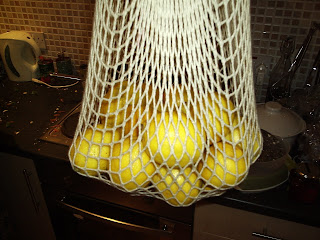With the first food for free crops merely weeks away I thought I'd write a wee note about some resources which we have been gathering on wild food.
At the end of January, we had a Kitchen outing to a talk being given on foraging in Edinburgh by Xa Milne, who along with her pal Fiona Houston took her family on a yearlong foraging adventure and wrote a book about it. The book, 'Seaweed and Eat It', is an inspiring introduction to urban foraging, and contains tips on where to gather various wild foods and also what to cook with them.
(I'm afraid I'm going to have to link you to Amazon here, but Other Bookshops Are Available!) http://www.amazon.co.uk/Seaweed-Eat-Foraging-Cooking-Adventure/dp/0753513412
Dr Pessimist Anticant was really quite enthused by Xa's anecdotes, and both of us fell to considering the possibilities for using foraged food in preserves. At the talk we were treated to some homemade elderflower cordial, hedgerow jam and crab apple jelly. The book contains a catch-all recipe for blossom cordial, because you can make cordial from the blossom of any tree with edible fruits, and even some without. Examples given are blackthorn, crab apple, sweet cicely and meadowsweet. Then there's nettle and dandelion. Then there are syrups of rosehip, dandelion or clover blossom. And a while chapter on edible seaweeds. I'm really looking forward to trying to find some carageen this summer and having jellies and set puddings made from it.
Another resource we have recently acquired is 'The Wild Food Yearbook' (http://www.countrykitchenmag.com/book-club.php) which is packed with recipes and tips for where to find things. It also has useful chapters such as 'Jams and Jellies: The Basics', and pictures which will be more useful for identifying things than in Seaweed and Eat It.
For the most helpful identification guide though, we have acquired the Collins Gem 'food for free' book (http://www.amazon.co.uk/Food-Free-Collins-Richard-Mabey/dp/0007183038) which we'll be carrying in our pocketses when out and about.
So, keep your eyes peeled for some nettle concoctions when spring has more confidently sprung!
Record #15: "You Know I'm No Good" by Wanda Jackson
15 years ago




